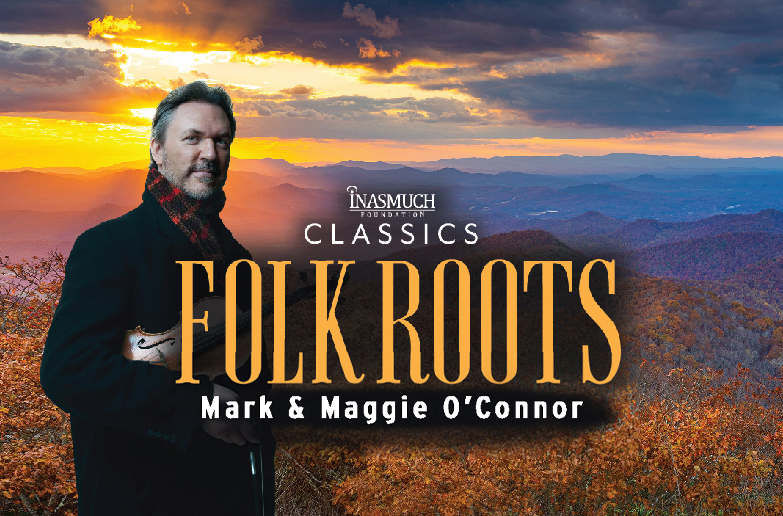
Folk Roots
Sat. November 11, 2023
Pre-concert talk – 7:00 PM
Concert – 8:00 PM
Civic Center Music Hall
Concert Details
Alexander Mickelthwate, conductor
Mark & Maggie O’Connor, violin
- O’CONNOR: Improvised Violin Concert
- O’CONNOR: “Swing” from Double Violin Concerto
- BARTOK: Concerto for Orchestra
Guest Artists
Mark & Maggie O’Connor, violin
NOTES FROM THE MAESTRO
“It’s fascinating to discover the musical roots of composers. What ARE the musical roots? Why could a certain piece of music only have been written by a certain composer at a specific time in history? The first half of our November concert will focus on musical roots in the Americas. The second half on the musical roots in Hungary.
Mexican composer Gabriel Ortiz goes back to the folk roots of the Huichol people of Mexico in her work Kauyumari, meaning “blue deer.” The blue deer represents a spiritual guide, one that is transformed through an extended pilgrimage into a hallucinogenic cactus called peyote. It allows the Huichol to communicate with their ancestors, do their bidding, and take on their role as guardians of the planet.
Mark O’Connor is a three times Grammy award winning American fiddle player and composer whose music combines bluegrass, country, jazz and classical. I had worked with him in Winnipeg several years ago and was so blown away that I thought it’s time to have him here in Oklahoma. Mark writes about the work:
‘Given the length of the piece, I dedicate each of the five movements to basic, widely interpretable elements rather than specific thoughts or images. “Fire,” the first movement, is passionate, intense, and otherworldly–an excellent launching point. “Air,” the second movement, stirs up a new kind of energy that extinguishes the embers remaining from the first movement. The playful and jazzy third movement, “Water,” introduces the human condition. The fourth movement, “Earth,” invokes blues, rock and heavy metal to convey what I call the “salt of the Earth.” The final movement manifests what I call the fifth element, “Faith.” It is an invention of humanity, a celebration of the human spirit. After a series of hymnic chord sequences, the movement proceeds through Southern Gospel refrains before morphing into Gospel hoedowns and Buzzard Lope dances. It culminates in a throw- down Jubilee.’
Hungarian composer Bela Bartok was not only a fantastic pianist and composer but also an ethnomusicologist who toured his country in the early 20th century to record peasant and Romani (gypsy) music, his musical roots. Bartok first focused on folk tunes of Hungary, then expanded his explorations to Romania, Bulgaria, Slovakia, Serbia, and to Turkish and Arabic countries. He asked people to perform songs for him, which he then wrote down.
His ‘Concerto for Orchestra,’ commissioned by maestro Serge Koussevitzky and premiered by the Boston Symphony in 1944 became his most famous work. The 5 movements feature the instruments of the orchestra in soloistic ways. The work combines elements of Western art music and Eastern European folk music. The last movement features one of the most exciting themes and endings in music history.”
Spotify Playlist
Program Book
Getting Here
While Here















